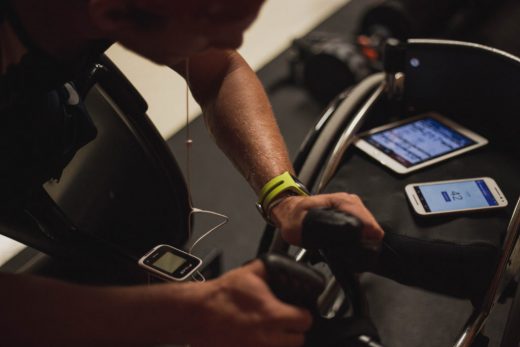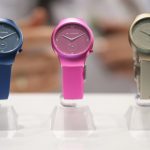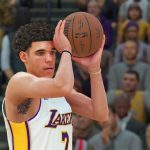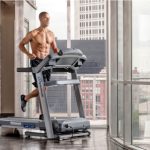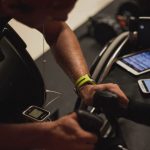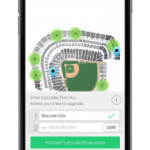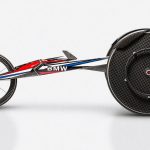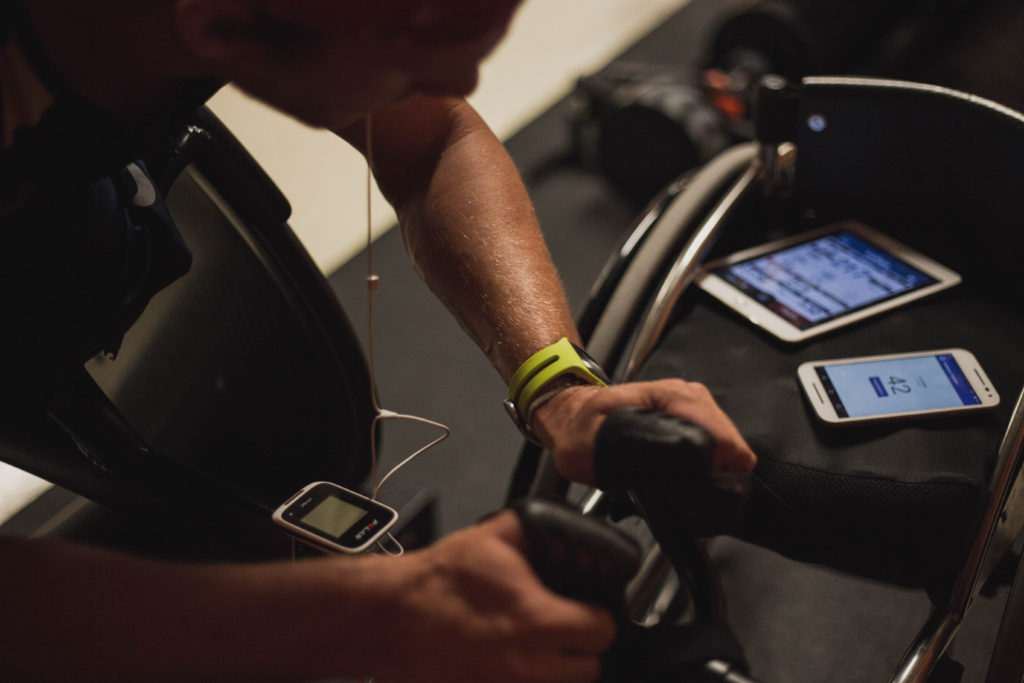Rithmio gathers new data on Paralympic athletes and trainers
Rithmio gathers new data on Paralympic athletes and trainers

For the first time, a Paralympic team is getting data on the athletes’ movements instead of data on the wheelchair only thanks to Rithmio, a leading motion recognition company.
Rithmio was founded in 2014 when doctoral student Adam Tilton partnered with his academic advisor Prashant Mehta, an associate professor of mechanical science and engineering to found a start-up focused on gesture and activity recognition. Recently, Rithmio has partnered with coach Adam Bleakney of U.S. Paralympic wheelchair racing and cycling athletes (and four-time Paralympian) to train the athletes that will compete in the Paralympic Games in Rio.
Through a wearable tech tool called Cadence Counter, Bleakney is able to get real-time cadence feedback that helps him understand his athlete’s stroke efficiency while training. This benefits athletes such as Josh George, gold, silver and bronze medal winner in the track and field at the Paralympics and competing this year in Rio.
I spoke with Adam Tilton, CEO and co-founder of Rithmio to learn more. He explained:
“ A Cadence Counter is an application that allows a Paralympic athlete to measure their personal cadence. Up until now there has been no measurement device that wheelchair athletes can wear in the chair that are accurate. They have all been measuring the movements of the chair not the person in the chair. Cadence is used in training, for example an athlete might be told to ‘go at 70 strokes per minute and do that for 60 secs, 140 for 30 seconds’ and previously the athlete would use a metronome need to guess those measurements are supposed to be. What our application does for them is that they wear a smart watch on the wrist with a corresponding app on their phone and now can do exactly that number”.
According to Bleakney, this is a metric that he’s been waiting for for a decade; his entire career he’s wanted to be able to have cadence.
See also: Rio 2016 athletes want more out of their wearables
Tilton went on to detail:
“What this means in a race is if you are coming up to a turn due to the chair’s acceleration or if there’s a wind shift, the athlete will know they are able to go into a turn and a wind shift so what they will do is want to adjust their cadence before that happens. e.g. increase their cadence before going into a headwind to be sure they maintain their pace. In a longer race, depending on where they are, if they are in front of the pack or the back, they will know what their most efficient cadence is and they will learn this over time. Just as we learn the beat to our favourite song, they can train to hit a cadence at their optimal efficiency and then they can recreate that cadence when they’re out on the track.”
Tilton said he and his team had a number of challenges in creating the cadence counter:
“The primary challenge in wearables is how do you automate the identification of something interesting? How do you build a system that can identify when something important is taking place and ignore all the other things? For example, in the gym it’s a very complicated problem because an athlete might do 900 plus exercises in a workout and then you have the problem of excluding other things that are not exercises that you don’t want to track such as moving between exercise machines or drinking from the water fountain.
The second challenge is being able to do advanced analysis. A lot of the exercise monitoring wearable devices today are reasonably good at counting steps but the problem is, if you do anything else (like sit in a moving train or on a boat) it counts the movement as steps. It fails to provide any steps. Also, it just gives you the step count, it’s not telling you about how you are walking. Our products provide very precise motion recognition so that any change in the way a user performs an action is detected.”
While the Cadence Counter is currently utilized by athletes competing in wheelchair racing and cycling, it could be transferred to other Paralympic sports such as swimming and gymnastics — if a sport is based on motion our technology could be easily applied.
The relationship between sports and technology is an interesting one, with some contending that we need to be careful to maintain the essence of sport rather than provide increased athletic ability to Paralympians.
“What we’re developing are solutions that allow us to get better data to make better decisions around the athlete so we’re allowing the athlete to see things that they might not otherwise see,” said Tilton, clarifying Rithmio’s key difference. “And I think that technology is going to drive a lot of improvements between sports and athletes, also within safety helping us understand how injures might occur.”
He added:
“I think the technology and athletics have always had a very close relationship and I think a lot of interesting developments in sport have been the result of new types of technology such as statistics and video cameras. I think it’s interesting that the U.S Paralympic Committee has an entire division creating the dots between coaches needs, athletes needs and the Paralympics, really seeking out what is on the bleeding edge to connect the right technology with the right athletes and just do R and D. High precision wearable training devices can protect an athlete from injury and potentially extend their career.”
Here’s hoping that Josh and his teammates can bring home medals again at this year’s Paralympics. It would be a testament to the technology that companies like Rithmio are bringing to athletic training.
The post Rithmio gathers new data on Paralympic athletes and trainers appeared first on ReadWrite.
(9)

